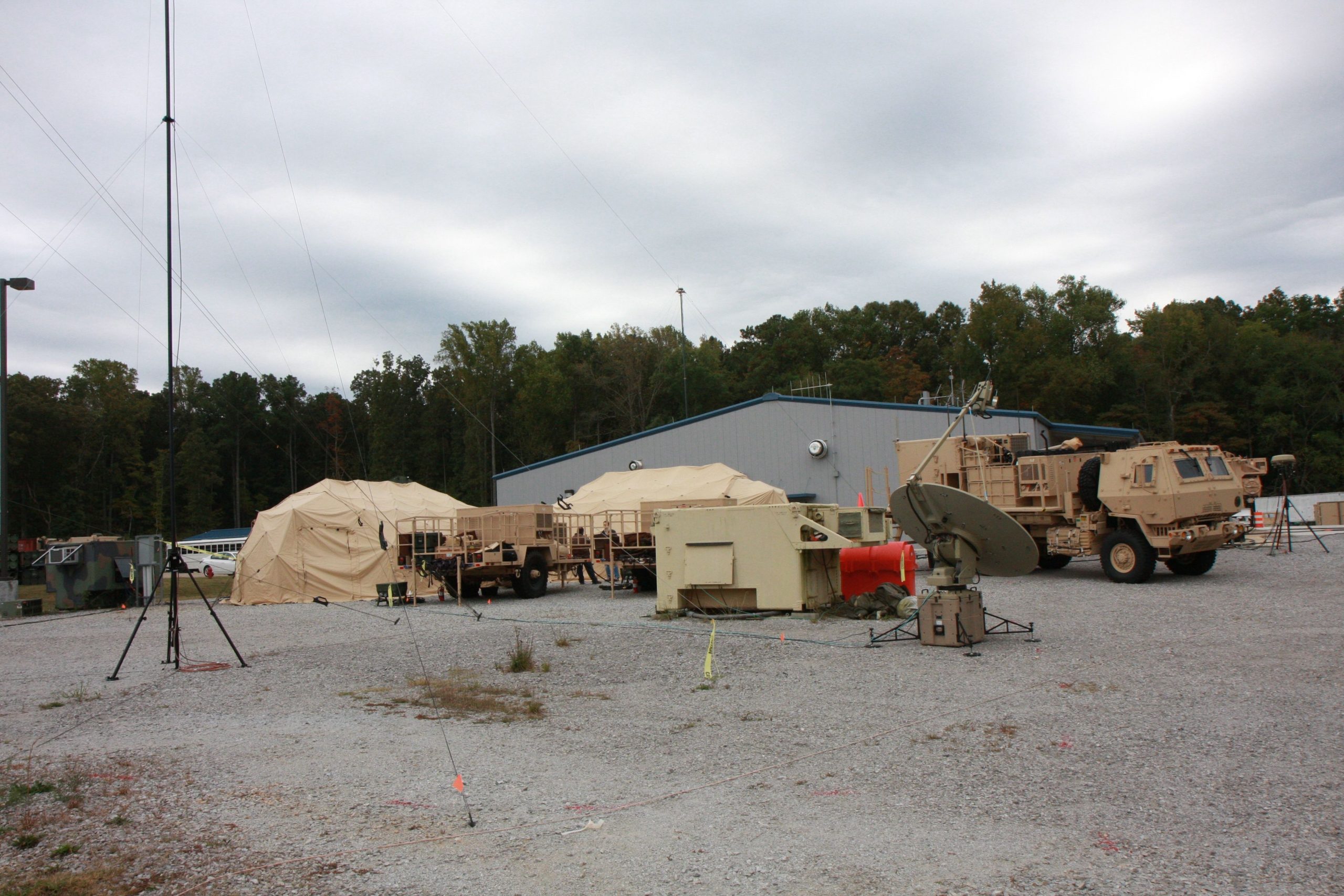
IAMD and IBCS cz. II
The Prototype EOC IBCS booth during the October/November 2013 exhibition at the Redstone Arsenal Garrison in Alabama. IFCN is
The development of the IBCS system is overshadowed by the changed - it is not known whether forever - the concept of the IAMD system. US Army requirements for solutions and devices used in IAMD have become less ambitious over the years. It also influenced the shape of the IBCS itself. Although, paradoxically, this does not make it easier for the IBCS constructors. This is evidenced by technical problems and work delays recorded over the past year.
The first part of the article (WiT 7/2017) describes the assumptions on the basis of which the requirements for IAMD were formulated. Known technical details about the IBCS command post are also given. We now come to the history of this program, still in its main development phase (EMD). We will also try to draw conclusions that may flow from the work on the IAMD/IBCS for Poland and the Wisła program.
Development course
Major events, most notably the history of the IBCS, are included in the calendar. The key event was the award in January 2010 by Northrop Grumman of a five-year IBCS development contract worth $577 million. Under this agreement, IBCS was to be integrated with the following systems: Patriot, SLAMRAAM, JLENS, Enhanced Sentinel stations, and later with THAAD and MEADS. Northrop Grumman has been named a Principal Supplier and Consortium Leader of: Boeing, Lockheed Martin, Harris, Schafer Corp., nLogic Inc., Numerica, Applied Data Trends, Colsa Corp., Space and Missile Defense Technologies (SMDT), Cohesion Force Inc. , Millennium Engineering and Integration, RhinoCorp Ltd. and Tobyhanna Army Depot. The proposal from Raytheon and its "team", i.e. General Dynamics, Teledyne Brown Engineering, Davidson Technologies, IBM and Carlson Technologies, was rejected on the ground. The current membership of the consortium led by Northrop Grumman is as follows: Boeing; Lockheed Martin; Harris Corp.; Schafer Corp.; nlogic; Numerica Corporation; Kolsa Corp.; EpiCue; Space and defense technologies; cohesion; Daniel H. Wagner Associates; KTEK; Rhino Corps; Tobyhanna Army Depot; cutting-edge electronics; SPARTA and the Parsons Company; instrumental sciences; research of intelligent systems; 4M Research and Cummings Aerospace. Raytheon is an external vendor and participant in the program as IAMD uses a number of its systems and devices. On the Pentagon side, the IBCS program is administered by the IAMD Project Office and the Missile and Space Executive Office (PEO M&S, including LTPO - Low Level Design Office and CMDS - Cruise Missile Defense Systems) based in Huntsville, Alabama, and dealing with communications, the program Executive Office: Command, Control and Communications-Tactical (PEO C3T) in Aberdeen, Maryland.
Development of the IBCS/IAMD is still ongoing. Both technically - IBCS simply does not work properly - and formally. In terms of US arms program procedures, IBCS is still in the EMD (Engineering and Manufacturing Development) phase, i.e. development. Initially, there were no signs of such problems, the program worked smoothly, flight tests (FT - Flight Test) were successful. However, software issues identified this year have rendered those assumptions obsolete.

